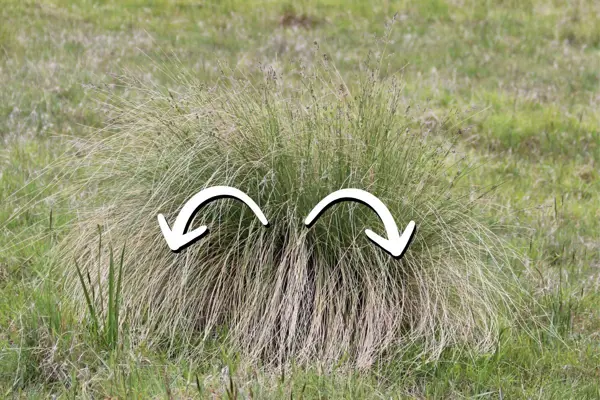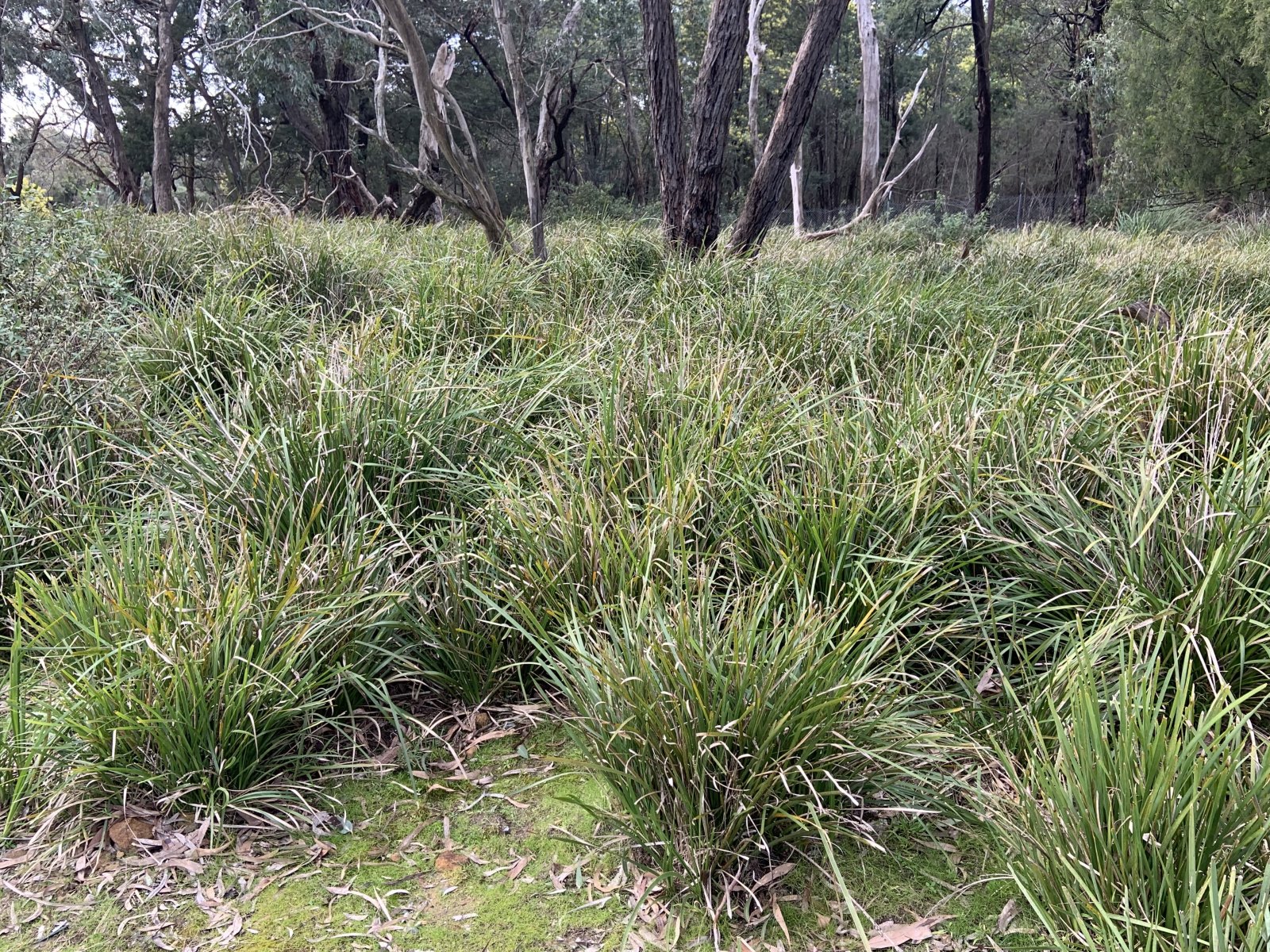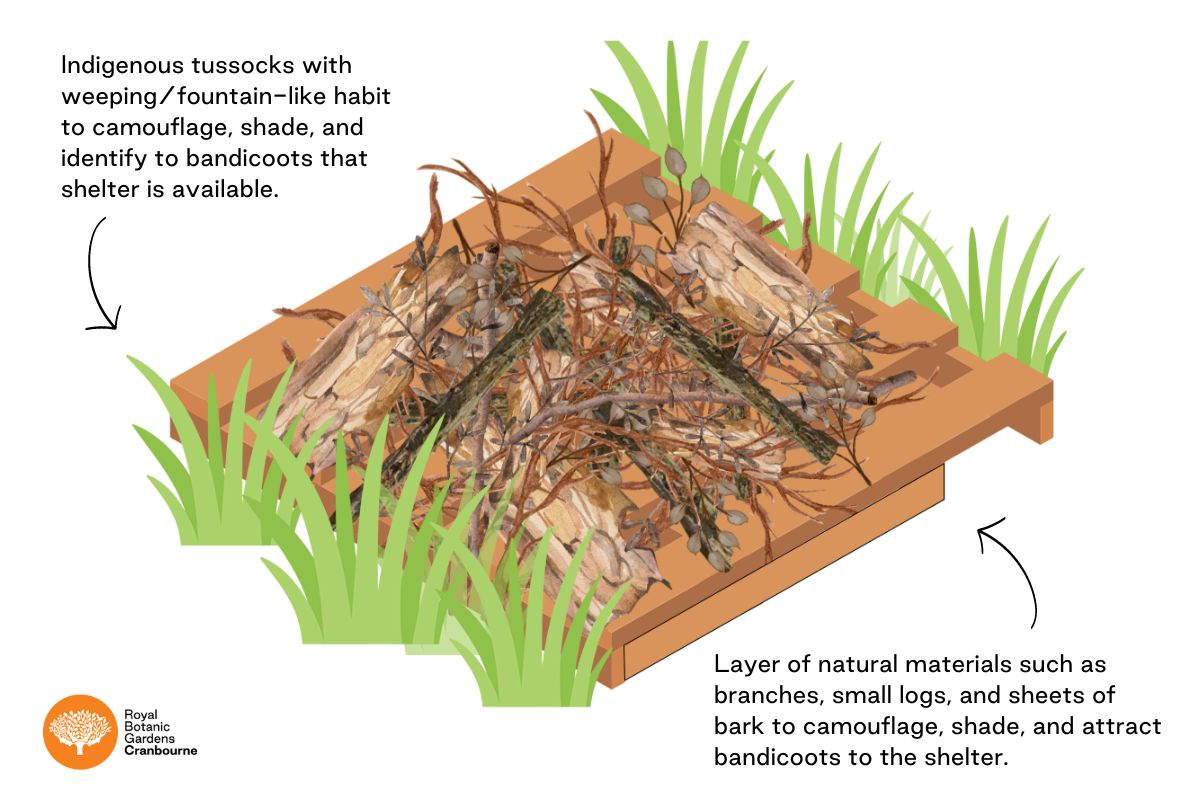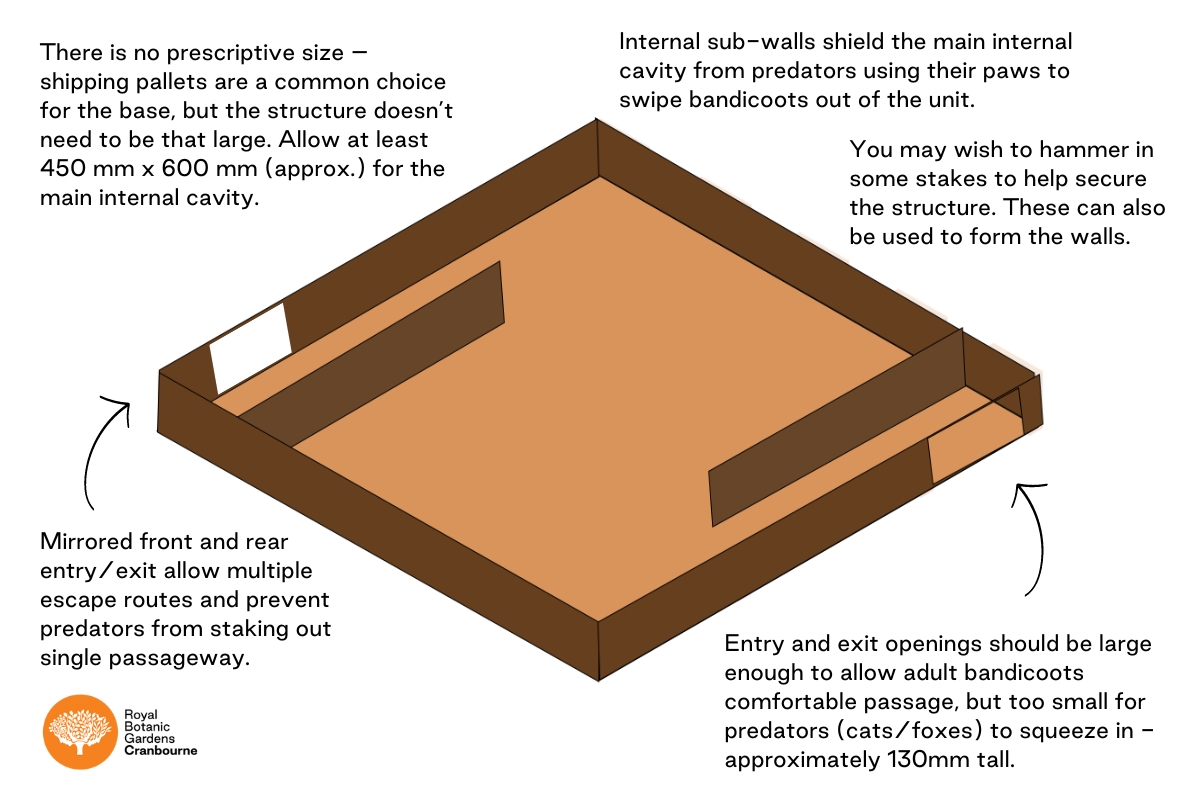
Plant for bandicoots
What do bandicoots need?
When it comes to habitat, Southern Brown Bandicoots require dense plantings of long tussocky plants and shrubs that help keep them hidden from prowling predators. They also use long grasses and grass-like plants to form their nests, which they make on the ground.
Choosing the right plants

Look for tussocky plants with an arching habit. That is, they curve down, a bit like a water fountain.
Good examples include:
- Poa labillardierei (Common tussock grass)
- Lomandra longifolia (Spiny-headed mat-rush)
- Ghania sieberiana (Red-fruit saw sedge)

Remember that bandicoots aren’t too picky – they care most about the form of the plant, rather than specific species. It’s great to include a variety of species and aim for plants that are indigenous to your area, as these will support a wide array of local wildlife, such as birds, butterflies, and other insects.
Be sure to check with your local indigenous nursery or council biodiversity officer to see what plants are suitable for your area.
Get started here:
Casey and Cardinia Indigenous Plant Guide
How densely should I plant?
As a general guide, aim for dense cover that would brush up against one’s legs if they tried to walk through it, while still allowing some open patches for foraging.

Gardens for Wildlife Program
Many Councils including City of Casey and Cardinia Shire offer free wildlife gardening advice and indigenous plant vouchers via the Gardens for Wildlife program. The program aims to support the community to create habitat for local wildlife using indigenous gardening practices, offering helpful resources, tips, and personalised guidance. For a list of Councils with affiliated programs, visit Gardens for Wildlife Victoria, or check with your local council.
Can I build a shelter for bandicoots?
When it comes to providing a home for bandicoots, nothing is as effective as planting habitat, and there is little evidence of bandicoots using a nest-box type structure.
With this in mind, the ‘bandicoot bungalow’ can be thought of as a stepping stone to help bandicoots move from one patch of habitat to another without being too exposed. These structures may offer temporary shelter from predators like foxes and cats - if they feel threatened, they can dive into the bungalow for cover!
They can be made cheaply with a shipping pallet, wooden stakes and branches, and are easy to assemble while your habitat garden is still growing.


A printable PDF of the bandicoot bungalow graphics above can be found here.
If you build a bandicoot bungalow and notice anything using it, we’d love to hear your observations!
Email sbb@rbg.vic.gov.au
